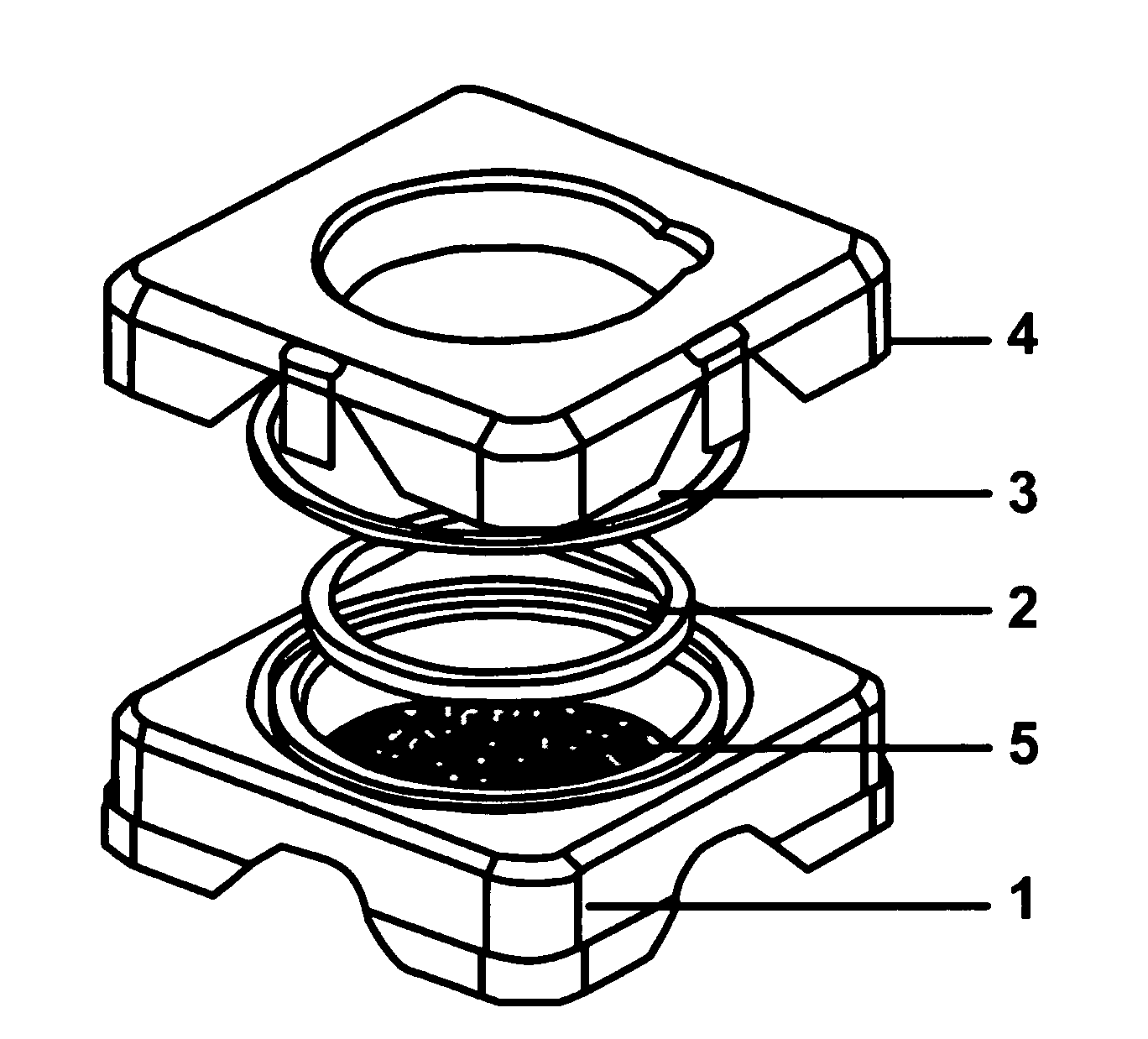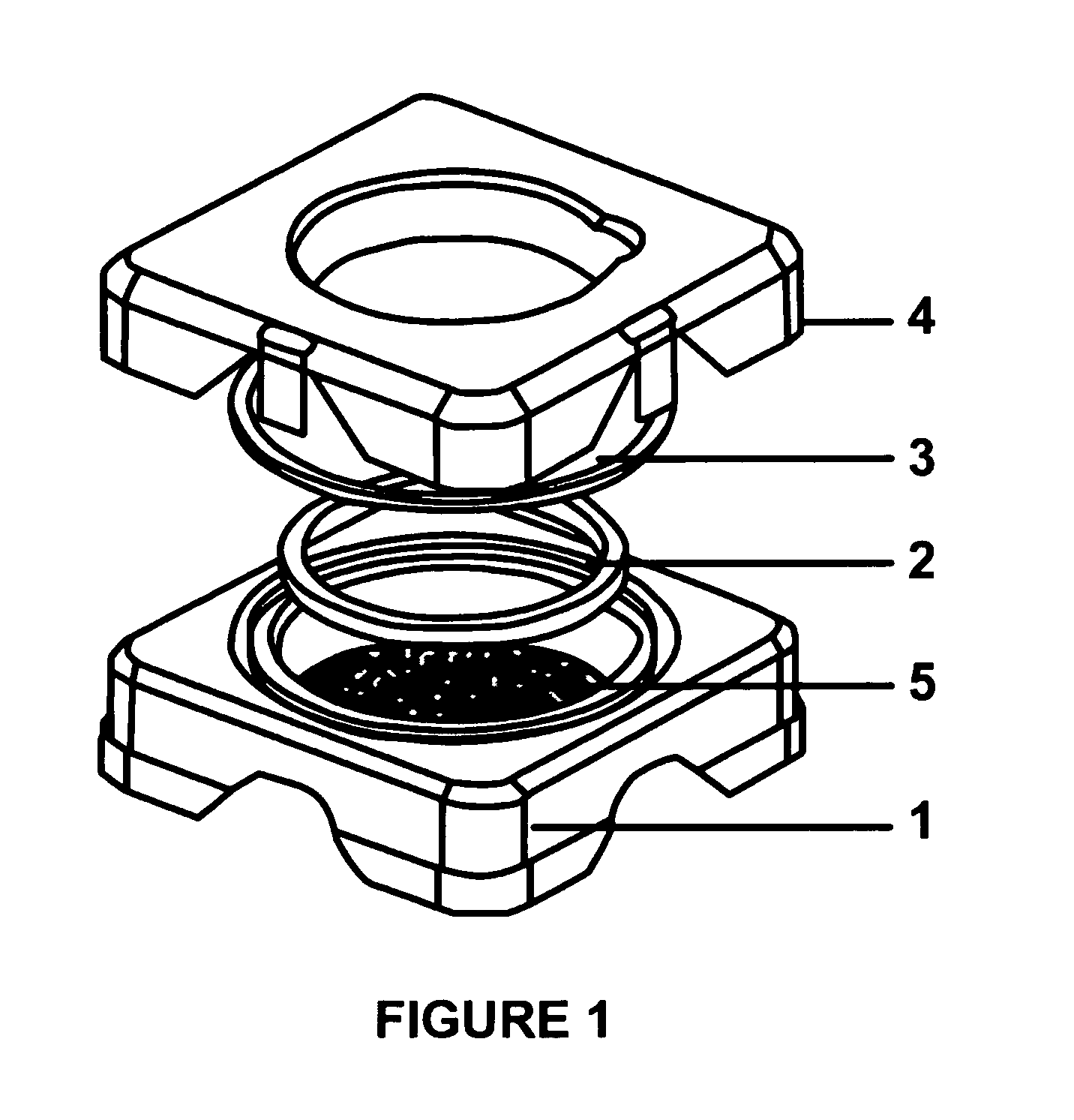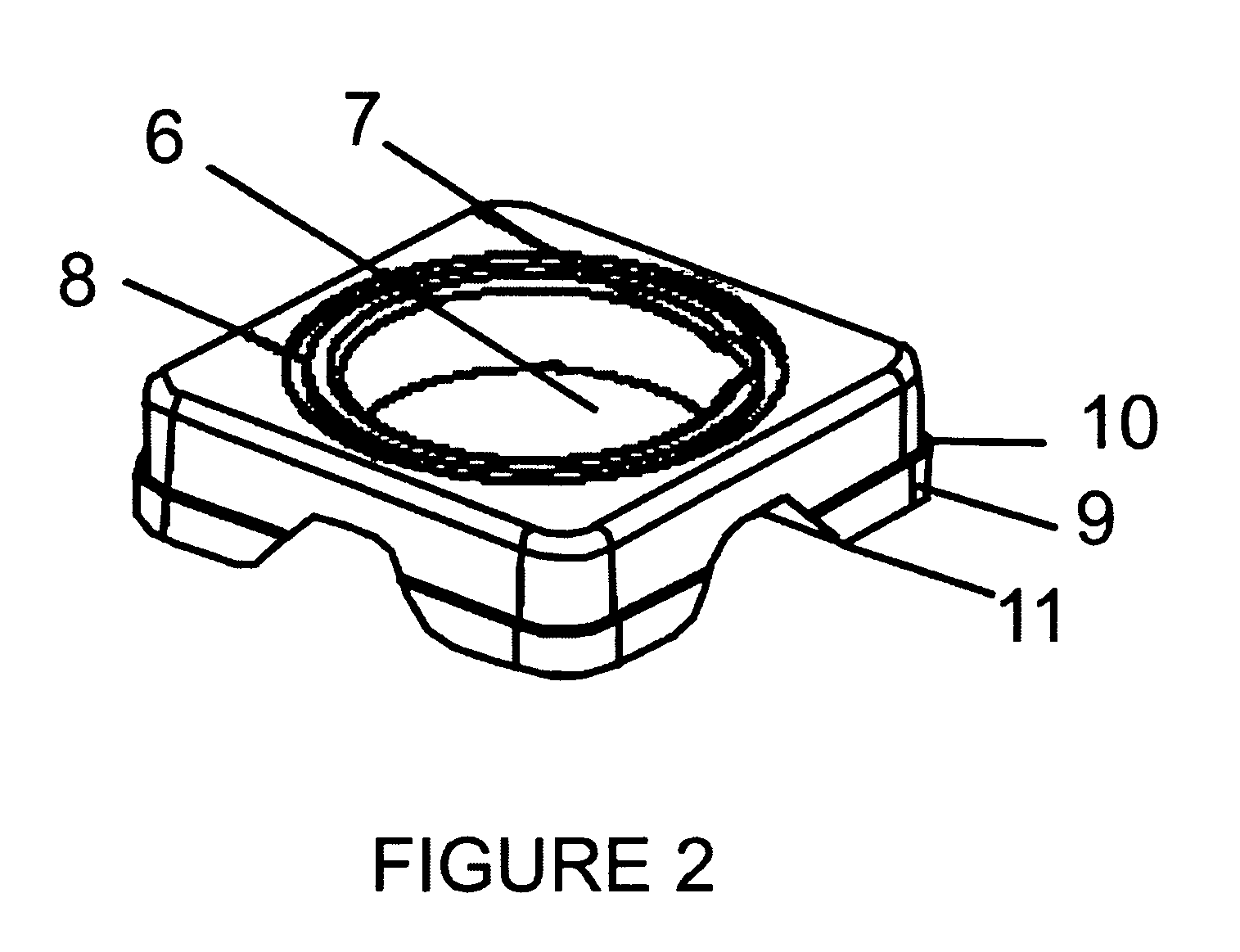Device for culturing and transporting cells
a cell and cell technology, applied in the field of cell culture equipment, can solve the problems of high shipping cost, significant delay, and inability to provide a tight seal to prevent contents spillage, and achieve the effects of reducing the viability of cells
- Summary
- Abstract
- Description
- Claims
- Application Information
AI Technical Summary
Benefits of technology
Problems solved by technology
Method used
Image
Examples
example 1
[0049]The embodiment illustrated in the attached drawings is an example of a device with a roughly square configuration and with a circular housing device. The disclosure is not limited to this shape, however, as a device as disclosed herein can be of any appropriate shape or configuration, such as circular, hexagonal, triangular, or of any regular polygonal shape. The device is composed of moldable parts, and can be produced from a variety of medical grade materials, including but not limited to polyethylene, polystyrene, polyethylene terephthalate, polycarbonate and the like. The grade of the material is preferably clear, which enables a user to visualize the cells cultured on membranes held in the device, and allows inspection and photography of the cells throughout the growth period using a microscope.
[0050]A device for culturing and / or transporting cells on membranes or sponges / gels is shown in an exploded view in FIG. 1. The two main body parts of the device are the base plate...
PUM
| Property | Measurement | Unit |
|---|---|---|
| height | aaaaa | aaaaa |
| height | aaaaa | aaaaa |
| volume | aaaaa | aaaaa |
Abstract
Description
Claims
Application Information
 Login to View More
Login to View More - R&D
- Intellectual Property
- Life Sciences
- Materials
- Tech Scout
- Unparalleled Data Quality
- Higher Quality Content
- 60% Fewer Hallucinations
Browse by: Latest US Patents, China's latest patents, Technical Efficacy Thesaurus, Application Domain, Technology Topic, Popular Technical Reports.
© 2025 PatSnap. All rights reserved.Legal|Privacy policy|Modern Slavery Act Transparency Statement|Sitemap|About US| Contact US: help@patsnap.com



